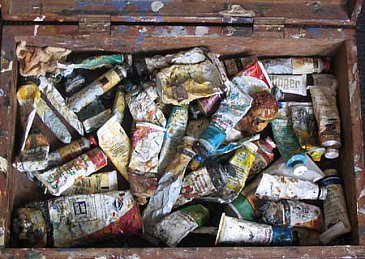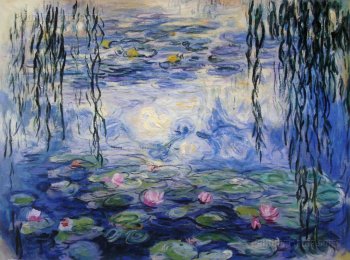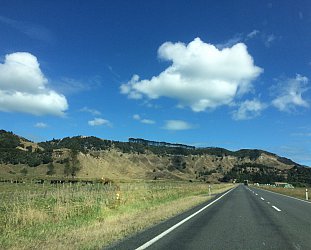Graham Reid | | 2 min read

To be honest, I was very sceptical about the forthcoming documentary The Impressionists (Sky Arts Channel, Thur April 19, 8.30)
I mean, the Impressionists – what don’t we already know? We’ve got the apron, tea towel and placemats, and really, who by now hasn’t heard of them who’s interested in art?
What’s more, the opening shot of the uber-passionate presenter of the show – art writer, Waldemar Januszczak – standing shin deep in the resplendent waters of the Virgin Islands did somewhat deflate me.
But, again being honest, since watching this particular episode (Waldemar’s eagerness aside), various factors have stuck firmly in my mind, making me think more about the era in which the majority of early Impressionist works were produced.
Impressionism coincided with the greatest change in social history, the industrial revolution. Metal paint tubes, invented in 1841, allowed painters freedom from carting around minerals, oils, pigments, mortars and pestles to mix paint, and the need to store it in pig’s bladders away from light and heat – which is difficult to do if you’re trying to paint plein air.
 I
hadn’t really thought about the importance of this simple
invention, and it caused me to reconsider paintings prior to the
1840s, seeing them in a whole new light.
I
hadn’t really thought about the importance of this simple
invention, and it caused me to reconsider paintings prior to the
1840s, seeing them in a whole new light.
Impressionism is a style of painting where light is virtually part of the medium.
In order to achieve the dappling characteristics of light, something else was invented, something so incredibly simple: the flat brush. Prior to this newly shaped brush, the standard shape was a round brush without a straight edge.
This new style of brush allowed for painterly abstraction, freeing the artist from the confines of realistic representation. This relatively modest modification to the artist’s toolkit made an enormous difference to the history of art.
But wait, there’s more.
Keen to get out amongst nature, the artist was forced to struggle with large, rigid easels, and hired help was often required to load and unload all this bulky equipment. Portable mass produced easels with inbuilt cases for paint tubes emancipated the landscape artist forever.
Driving the great change of the industrial revolution was of course, the invention of the steam train. What once took a day to journey from the city to the seaside was now an hour’s ride.
Voila! The Impressionist artist was born.
So, while I was initially reluctant to give my attention to a series that looked like being irritatingly populist, I have to admit that I’m now curious to know what other gems will be uncovered in future episodes.
It’ll pay to keep watching.
Viky Garden is an Auckland artist whose work can be viewed here.
Other Voices Other Rooms is an opportunity for Elsewhere readers to contribute their ideas, passions, interests and opinions about whatever takes their fancy. Elsewhere welcomes travel stories, think pieces, essays about readers' research or hobbies etc etc. Nail it in 1000 words of fewer and contact graham.reid@elsewhere.co.nz.
See here for previous contributors' work. It is wide-ranging, huh?





post a comment